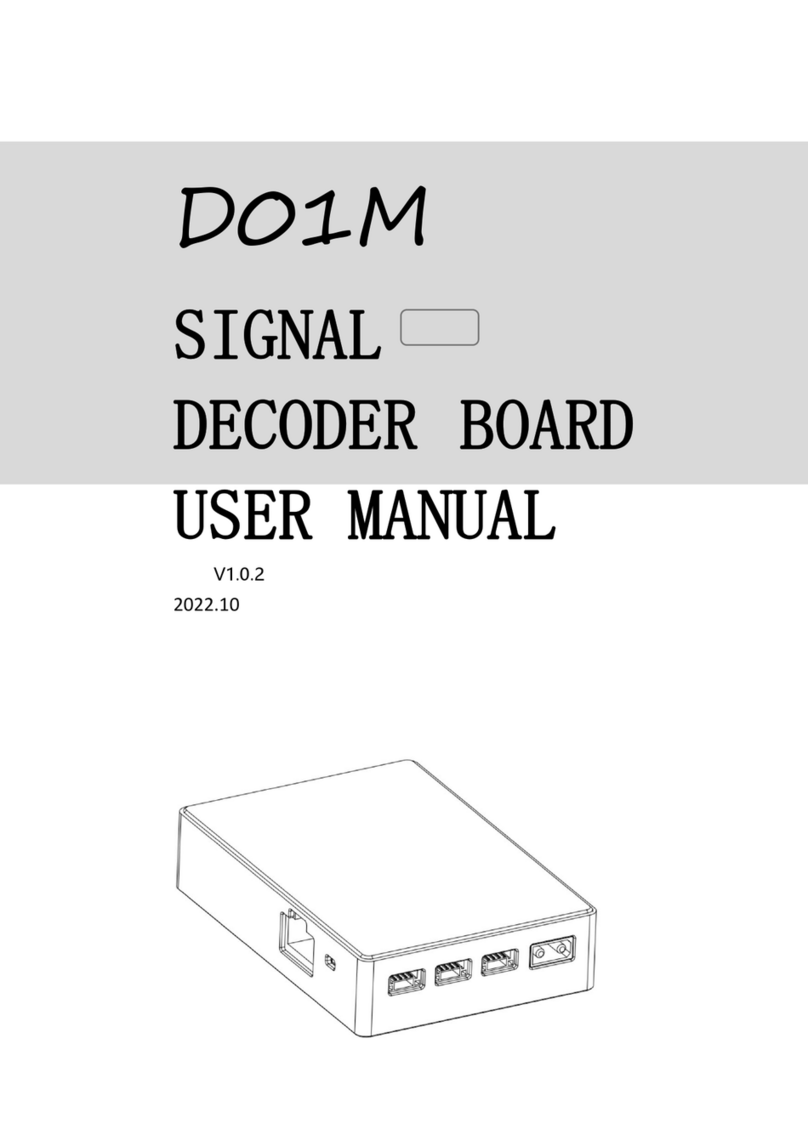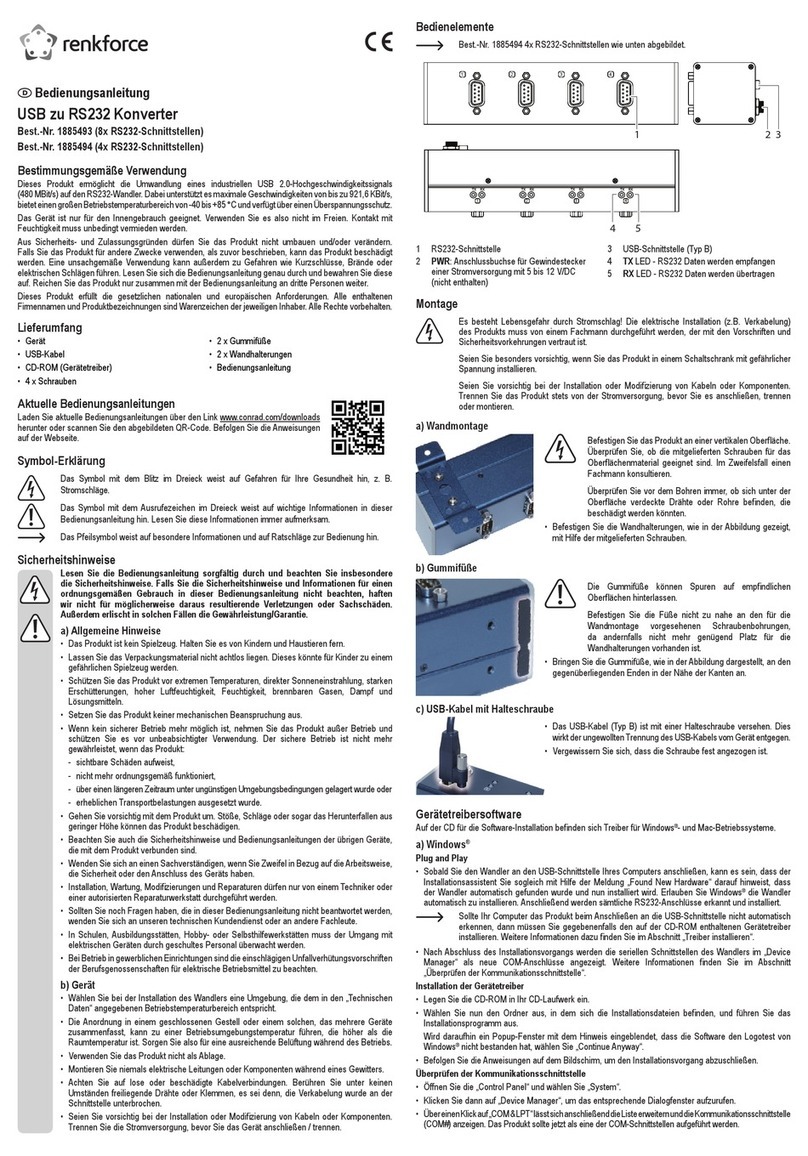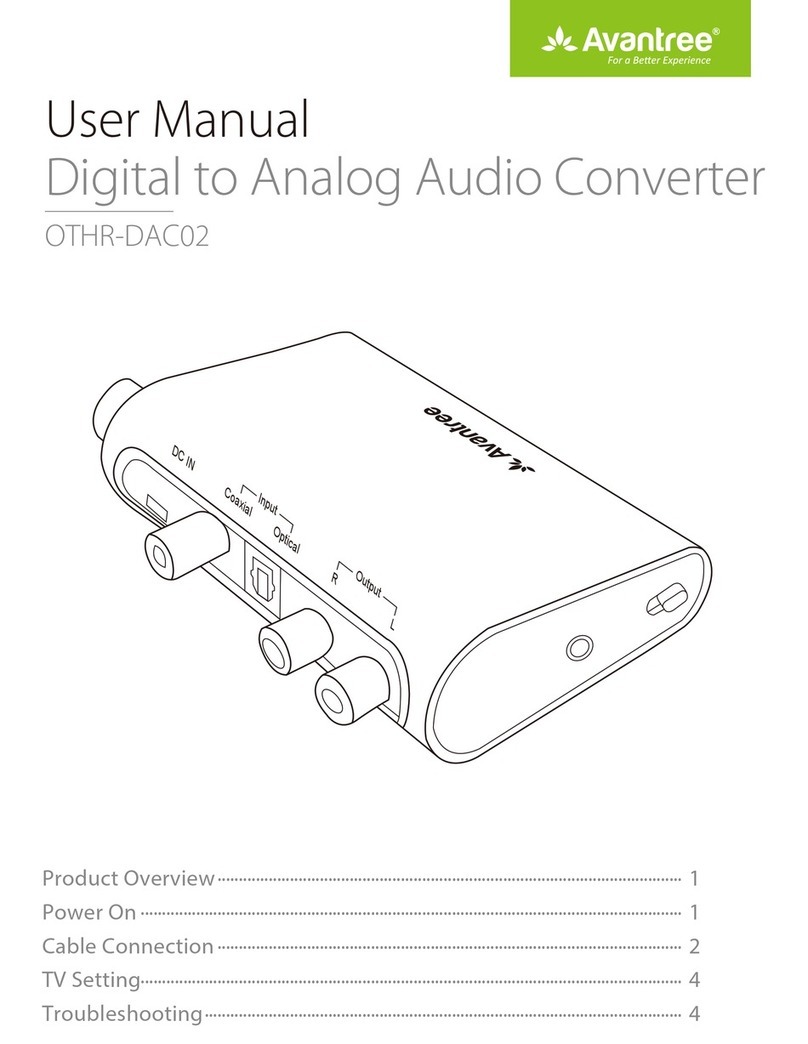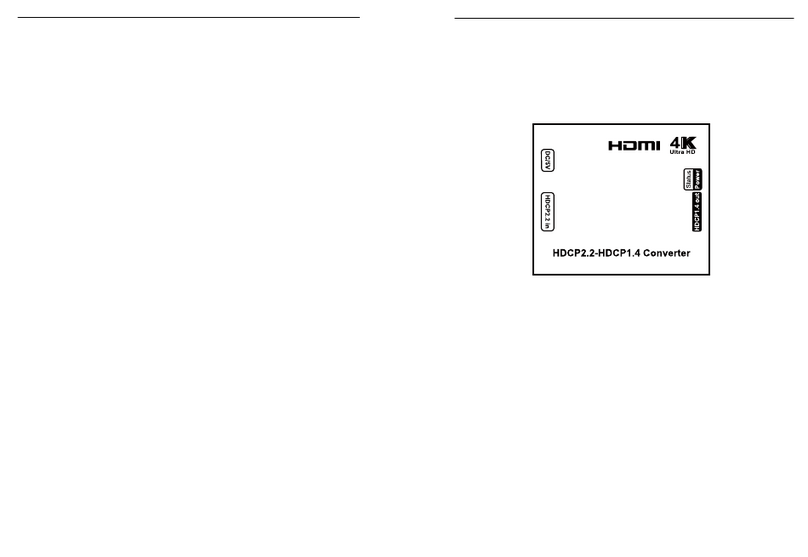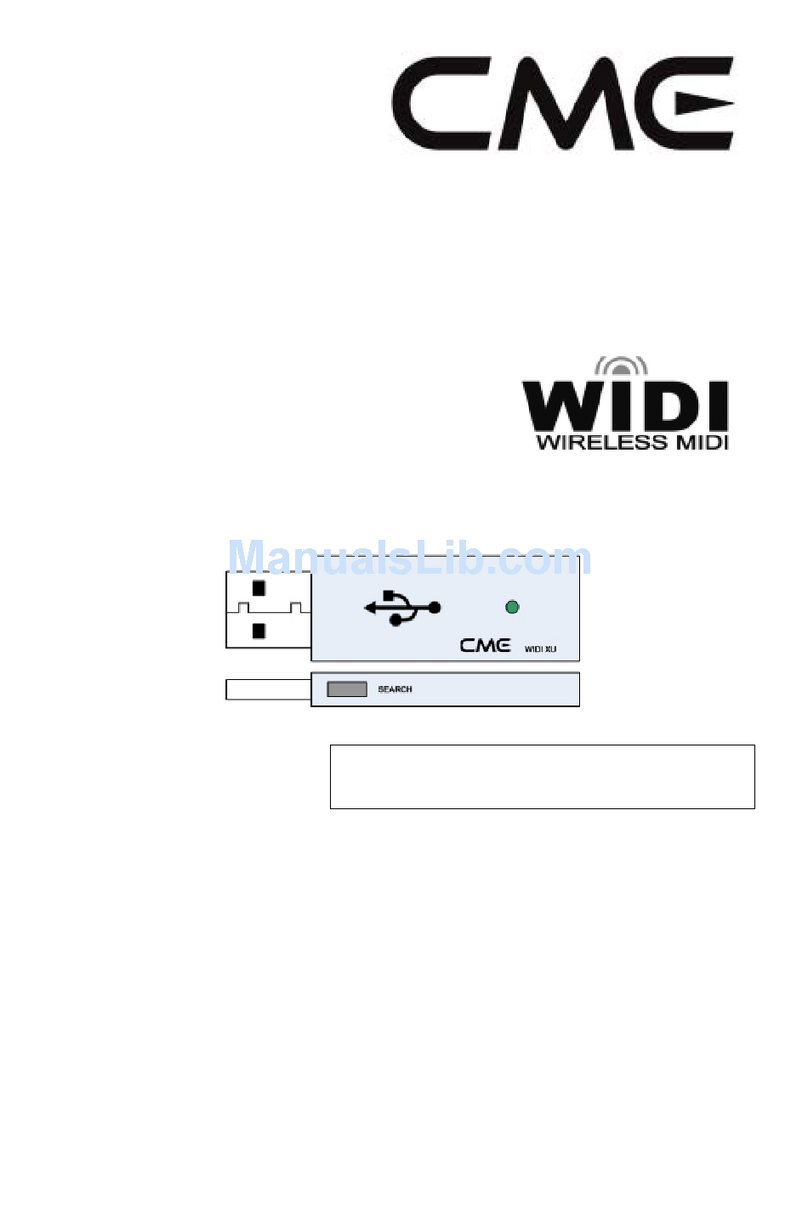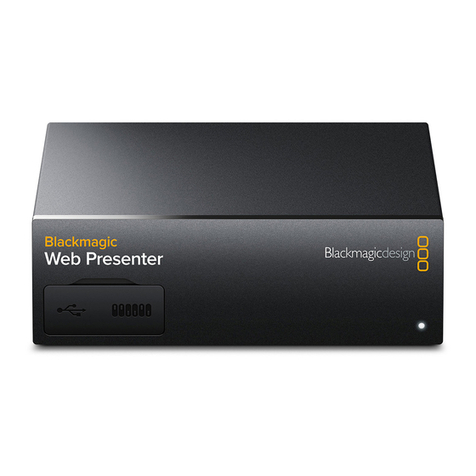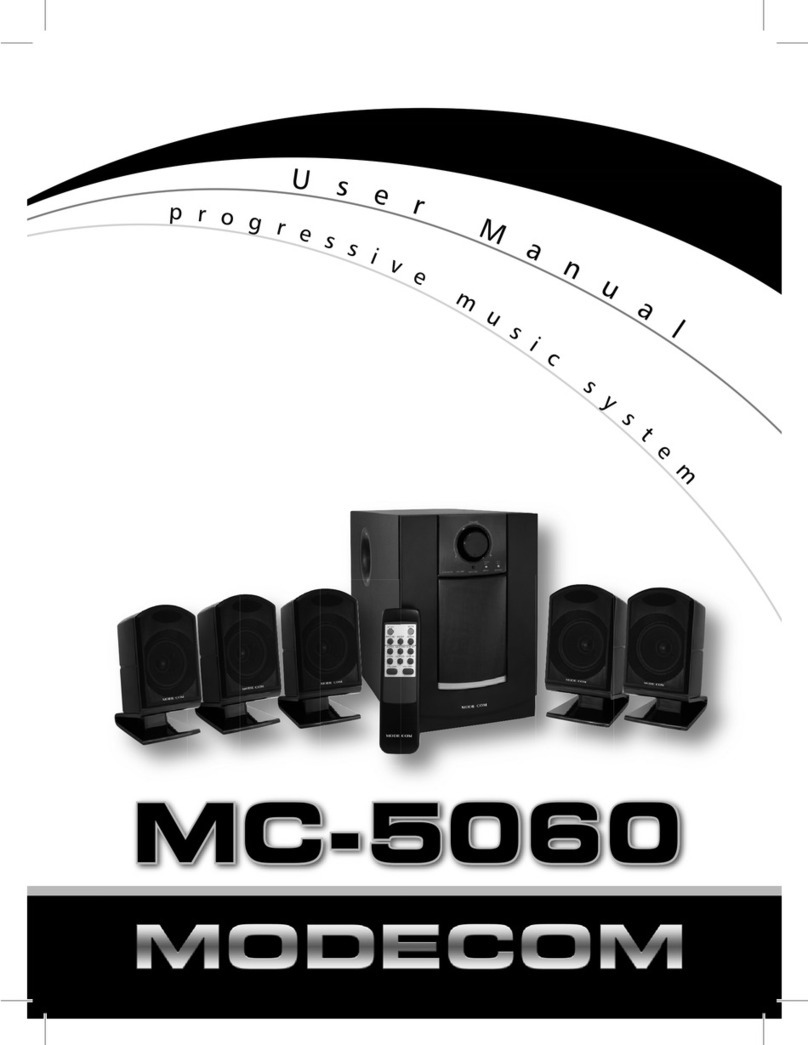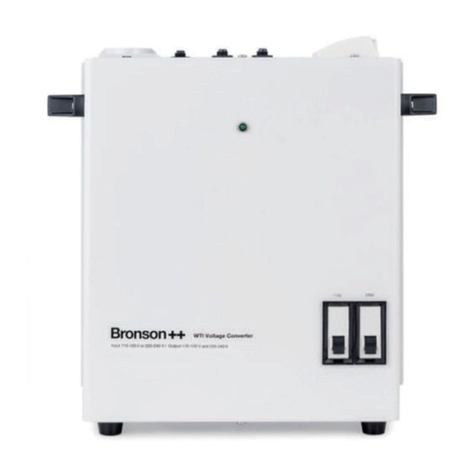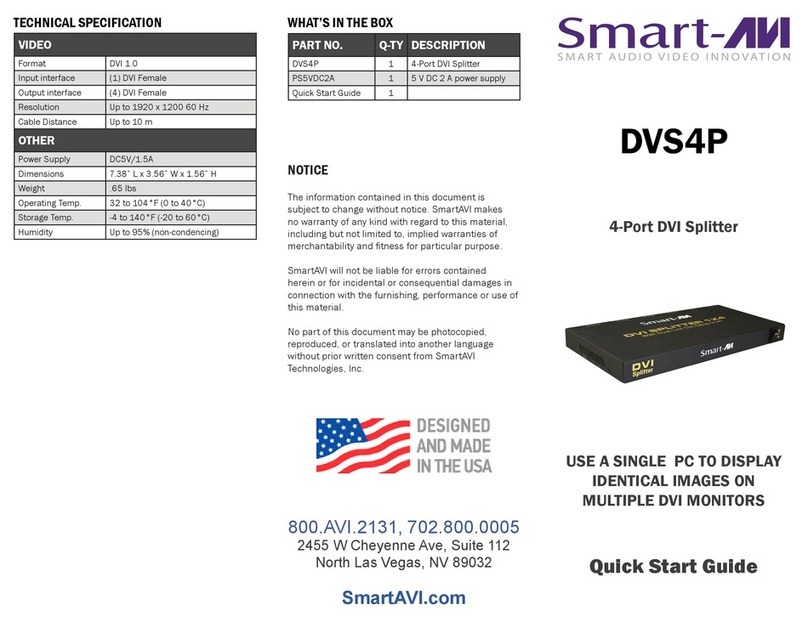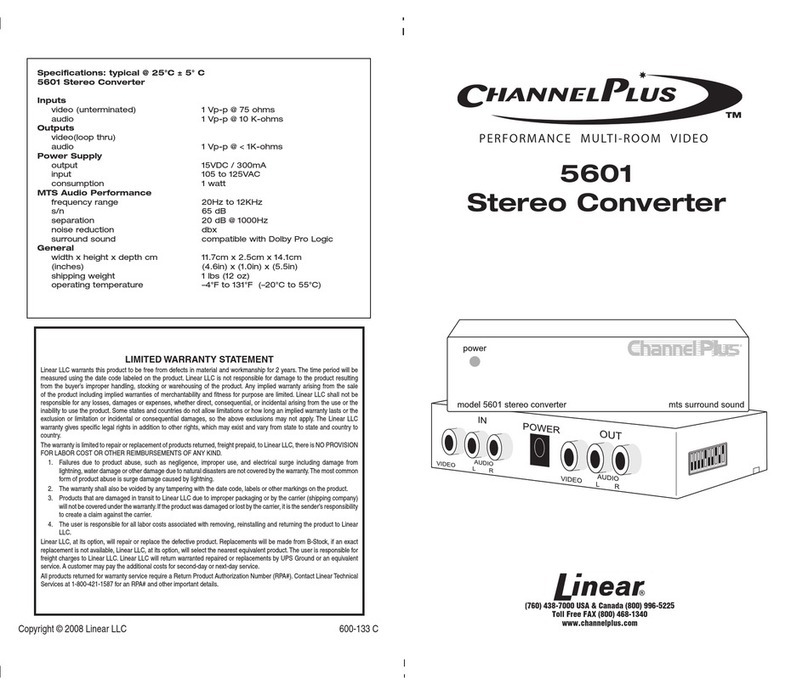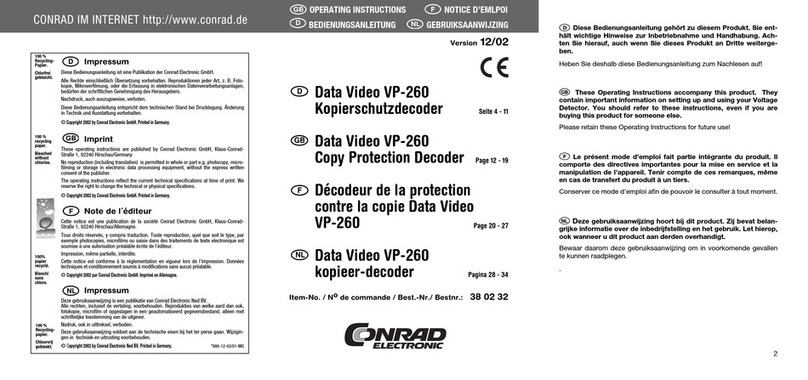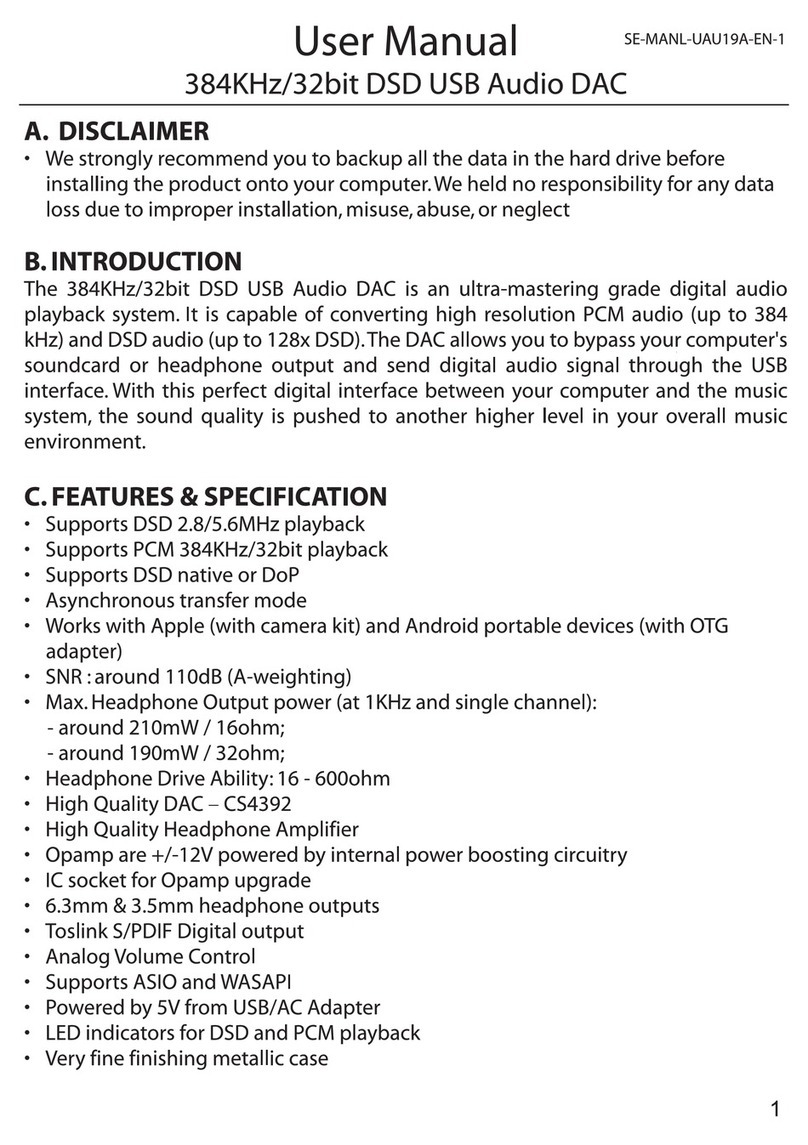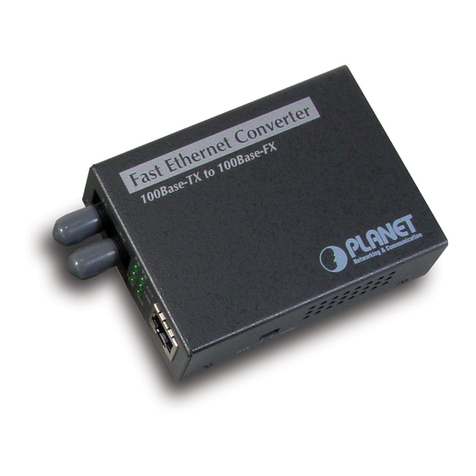RLH Industries 16 Channel T1 Over Ethernet Multiplexer... User manual

!RLH Industries, Inc. • Tel. 866-DO-FIBER • Fax 714 532-1885 • www.fiberopticlink.com!Page "1
Single Channel T1 !
Fiber Link Card System
SYSTEM INSTALLATION INFORMATION
Description
The Single Channel T1 Fiber Link Card converts electrical/
copper T1(DS1) signals for transport over optical fiber. The
system can operate from T1 span power (60mA) or local
24/48VDC power. It has LED status and alarm output
indicators for system monitoring, and is temperature
hardened for use in extreme conditions.
All of the products in the RLH T1 Fiber Link family are
designed for the utmost quality and reliability. Typical
applications include high voltage GPR isolation, utility,
wireless backhaul, and military communications. RLH single
channel T1 systems are made in the USA and are covered by
our Limited Lifetime Warranty.
Key Features
• Single-mode (up to 60km/37mi.) or Multimode (2km/1.2mi.)
fiber systems with either ST or SC fiber connector types.
• Dual power capable, line or local 24/48VDC.
• Simplex 60mA line powering from the T1 span !
or HDSL NIU/RT unit.
• Environmentally hardened to operate in -40°F to +158°F !
(-40°C to +70°C) environments.
• Compatible with 2 Channel DIN/Card and the Single Channel !
DIN modules.
• The same unit may be used at either end of the fiber system,
simplifying spares and ordering.
• Loopback testing features.
• B8ZS or AMI compatible.
• NC/NO alarm contact for remote monitoring of system health.
• DIN rail or wall mountable compact modules are available.
• Use within or beyond customer premise environments.
• Covered by our Limited Lifetime Warranty.
•Made in the USA
U-066 2019A-0805
Compliance Information
The RLH Single Channel T1 Fiber Link Card System is
compliant with the following industry standards:
•FCC PART-15
•FCC PART-68B
•GR-1089
•IEEE-487
•IEEE-1590
•Motorola R56
Contents
Description and Key Features !1"___________
General Safety Practices !2"________________
Application!3"____________________________
Installation !5"____________________________
Connections !8"___________________________
Powering the System!8"___________________
Switch Settings!9"________________________
LED Indicators!10"________________________
NIU Compatibility !12"_____________________
Specifications!13"_________________________
Ordering Information !14"__________________
Technical Support !14_____________________
The leader in!
rugged fiber optic
technology.
USER GUIDE
RLH Industries, Inc.
Single Channel T1 Fiber Link Card

General safety practices
The equipment discussed in this document may require tools designed for the purpose being described. RLH
recommends that service personnel be familiar with the correct handling and use of any installation equipment
used, and follow all safety precautions including the use of protective personal equipment as required.
Caution - Severe Shock Hazard"
• Never install during a lightning storm or where unsafe high voltages are present.
• Active T1 lines carry high DC voltages up to 130V. Use caution when handling T1 wiring.
• Active HDSL lines carry high DC voltages up to 210V. Use caution when handling HDSL wiring.
Warning"
The intra-building port(s) of the equipment or subassembly is suitable for connection to intrabuilding or
unexposed wiring or cabling only. The intra-building port(s) of the equipment MUST NOT be metallically
connected to interfaces that connect to the OSP or its wiring. These interfaces are designed for use as intra-
building interfaces only (Type 4 ports as described in GR-1089-CORE, Issue 4) and require isolation from the
exposed OSP cabling. The addition of Primary Protectors is not sufficient protection in order to connect these
interfaces metallically to OSP wiring.
Special handling requirements
Be careful when handling electronic components
This card utilizes circuitry that can be damaged by static electricity. When transporting the card, carry it in an
ESD safe container such as the antistatic bag provided with the card. There are no user serviceable parts on the
card. Do not open or remove the housing or insert tools or other objects into any openings except to access
switches or where otherwise intended. Doing so may permanently damage the card.
Guidelines for handling terminated fiber cable
"
• Do not bend fiber cable sharply. Use gradual and smooth bends to avoid damaging glass fiber.
• Keep dust caps on fiber optic connectors at all times when disconnected.
• Do not remove dust caps from unused fiber.
• Keep fiber ends and fiber connectors clean and free from dust, dirt and debris. Contamination will cause signal loss.
• Do not touch fiber ends.
• Store excess fiber on housing spools or fiber spools at site
!RLH Industries, Inc. • Tel. 866-DO-FIBER • Fax 714 532-1885 • www.fiberopticlink.com!Page "2

Application
The RLH Single Channel T1 Fiber Link Card system transports the copper T1 line at 1.544Mbps, and optically
transmits over fiber optic cable to the module at the opposite end, which then converts the optical signals back
into the original copper T1 line.
Below are sample system diagrams illustrating typical T1 connections to and from the system. On the CO
(Central Office) side, the Single Channel T1 system may be powered by a single T1 line carrying span power, or
optionally by a local power source. The SUB side requires a local power source for operation.
Single Channel T1 System Diagram
"
!RLH Industries, Inc. • Tel. 866-DO-FIBER • Fax 714 532-1885 • www.fiberopticlink.com!Page "3

Front Panel
Single Channel T1 Fiber Link Card #
Front Panel Layout
Power Indicator
Fiber Optic Receive FrameValid !
& Frame Alarm Indicator
DS1 signal detection and Receive AIS
(Alarm Indication Signal) detection
Receive BPV!
(Bipolar Violation) detection
Remote Channel
Alarm Indicator
T1 Line Connector
Alarm Connection Terminal
Local Power Connection Terminal
Fiber Optic Connectors
!RLH Industries, Inc. • Tel. 866-DO-FIBER • Fax 714 532-1885 • www.fiberopticlink.com!Page "4

Installation
Prior to installation:
• Check for shipping damage
• Check the contents to ensure correct model and fiber type
• Have a clean, dry installation environment ready
• Ensure that the fiber type at the site matches the system type
If damage is discovered file a claim immediately with the carrier, then contact RLH customer service.
Required for installation:
• 24-56VDC (60mA@24VDC maximum) line or local power source at each side of the system.
• Suitable RLH Fiber Link Card housing
• Active T1 line
• Multimeter
You will need a T1 analyzer such as a T-BERD and a multimeter
Be familiar with the test settings. Some analyzers have line power and multimeter capability. For installation
where no T1 signal is available, the analyzer must be capable of generating a T1 signal.
""
Required power sources if installing before T1 service is available at the site
You will need to power the system to test it. Use a separate power source for powering the CO and Sub side
card. A battery may be used.
"
+
–
24 - 56VDC
AC Volts
Power SourcePower Source
24 - 56VDC
AC Volts
OK
BATT
+
–
Multimeter Multimeter
OK
BATT
Sub Side
CO Side
Use 22~24AWG solid wire for power supply connections.
Refer to the power supply connection and use information for fuse or circuit breaker requirements. Use caution
when handling copper wiring. Power connections may carry high voltages.
Fuses must be installed within a finger safe housing to prevent electric shock from accidental contact or during
fuse replacement.
!RLH Industries, Inc. • Tel. 866-DO-FIBER • Fax 714 532-1885 • www.fiberopticlink.com!Page "5

Line Powering
The Single Channel T1 card can be line powered via 60mA simplex current on the T1 line. When an HDSL or T1
NIU is placed at the CO side of the Fiber Link it must provide span-through line power to the T1 fiber interface
card. When line power is available, no external or local power is required to operate the fiber card. An active T1
line with 60mA line power connected to the fiber interface card should typically measure 22-30VDC between
transmit and receive pairs. If voltage is not present verify the NIU model number using the NIU Compatibility
Chart listed in this document, or contact RLH to ensure span-through power compatibility.
Installing card housing
Mount housing in equipment rack or attach to backboard.
Mount the desired card housing in an equipment rack, or to a wall or backboard using the mounting brackets
provided.
When installing an RLH card housing, leave room for the door to open and provide enough slack in wiring and
fiber to allow for card access.
Note card orientation in housing during installation
Handle card by edges. Install in slot 1 or next available card slot. For ease of installation, install the card into
housing before connecting fiber or copper wiring.
!
"
Installing into Card Housing
!RLH Industries, Inc. • Tel. 866-DO-FIBER • Fax 714 532-1885 • www.fiberopticlink.com!Page "6

Copper wiring requirements
Copper wiring to the T1 cards
The connectors on the T1 cards are designed for specific wire sizes and mechanical connections at the
terminals.
• Use 22~24AWG solid copper wire
• Stripping length: 8mm
• Connector tightening torque: 0.5~0.6 Nm. Do not over-tighten screw down wire terminals.
"
Attaching Copper Wiring to T1 Card
!RLH Industries, Inc. • Tel. 866-DO-FIBER • Fax 714 532-1885 • www.fiberopticlink.com!Page "7

Connections
Connect Fiber Optic Cable
The T1 cards are equipped with two optical connectors. Connect the fiber to the Transmit and Receive fiber
connectors. The transmit port is marked TX, and the receive port is marked RX. Verify that the TX fiber at one
card is connected to the RX port on the opposite end. The system will not operate if TX is connected to TX or RX
to RX.
Fiber cables should be routed loosely avoiding tight bends to prevent excessive optical loss.
Note: The Single Channel T1 Fiber Link cards are compatible with the Single Channel T1 Fiber Link DIN
units. Refer to the DIN mount user guides for information related to the DIN mount modules.
Connect Copper T1 Send and Receive pairs
The T1 pairs from the Telco connect to the RJ-48C connector on the face of the card.
Note: At the CO side, the Single Channel T1 modules are designed to operate on standard T1 lines that
are current limited at 60mA. Open circuit voltage on T1 lines can vary from 30V to 130V across
send and receive pairs depending on the number of repeaters in the line. However, voltage across
the module when operating will be 30VDC or less.
"
RJ Connector Pinout Diagram
Powering the System
Powering at the CO end
Typically, the CO side module is span powered by a single 60mA simplex current sources derived from the T1
Telco Span Transmit and Receive copper pairs.
The CO side module may also be powered externally by connecting a 24-56VDC 60mA power source to the
power terminal on the unit. The 1 Channel T1 Cards are polarity insensitive to the DC input power source.
Powering at the SUB end
To local power, connect a 24-56VDC 60mA power source to the power terminal on the unit. The cards are
polarity insensitive to the DC input power source.
To span power the SUB side module you must have a minimum of one 60mA simplex current source on the T1
Send and Receive pairs on a working circuit.
Note:!The CO and SUB units must be powered by separate isolated power sources to maintain high
voltage isolation.
T1 Surge Protection
Thermistors, and Sidactors limit transients appearing between the Tip and Ring of each pair. Transients
appearing at the power terminals or between input and output pairs are limited by PTC thermistors and a metal
oxide varistor.
RJ-48C Port
1 Receive (Ring)
5Transmit (Tip)
2 Receive (Tip)
6NC
3 NC
7NC
4 Transmit (Ring)
8NC
PIN 8
PIN 1
!RLH Industries, Inc. • Tel. 866-DO-FIBER • Fax 714 532-1885 • www.fiberopticlink.com!Page "8

T1 Alarm Contact
The Single Channel T1 System alarm contact allows you to monitor the health of your T1 Fiber Link system. If
any of the below faults are present the alarm contact will revert to its normal state:
•BPV - Bi-polar Violations
•AIS - All One’s Condition
•FRM Alarm - Fiber Frame Loss
•PWR - DC Power Loss
When all of the above conditions are OK the contact will change from its resting state to indicate that the system
is running and healthy.
Switch Settings
The DIP switch is located on the top surface of the card. You may need to pull the card slightly out of the card
housing to gain sufficient access to the switch.
B8ZS or AMI Encoding
The AMI/B8ZS DIP switch is used to establish the selection of B8ZS (bit 8 zero substitution) or AMI (alternate
mark inversion) line encoding for the T1 input.
Remote Loopback
The remote (RLOOP) loopback DIP switch is provided to allow for remote loop back of the copper T1 line for
trouble shooting purposes.
The loop back function begins at the T1 receive twisted pair, through the T1 LIU (Line Interface Unit), and then
back out the T1 transmit twisted pair. Normal operating position is OFF for All switch positions.
#
RLOOP (Remote Loopback) Switch Diagram
OUT
IN
RX
TX
RX
TX
TX
RX
CO Side Module
(Remote Side)
SUB Side Module
(Local Side)
T-1 TEST
EQUIPMENT
Fiber
1 2 3 4 5 6
ONON
1 2 3 4 5 6
• Turn on RLOOP switch to check
copper wire connection
LLOOP
RLOOP
ON
LBO-15
LBO-7.5
NOT USED
ON - AMI
OFF - B8ZS
1 2 3 4 5 6
Signal Loop
!RLH Industries, Inc. • Tel. 866-DO-FIBER • Fax 714 532-1885 • www.fiberopticlink.com!Page "9

Local Loopback
The local (LLOOP) loopback DIP switch is provided to allow for local loop back of the fiber T1 line for
troubleshooting purposes.
The loop back function begins with the T1 fiber transmit data coming from the remote side module, through the
fiber cable to the local receiver, then back out from the local fiber transmitter to the remote side. Normal
operating position is OFF for All switch positions.!
LLOOP (Local Loopback) Switch Diagram#
Note: The LEDs will indicate the matching conditions upon detection of errors or alarms. The LEDs will
remain ON until the error condition has been removed.
Line Build Out (LBO)
The Line Build Out switch simulates cable loss of the signal for compatibility with different installation scenarios.
There are switches corresponding to -7.5dB and -15dB attenuation level. Select a level appropriate for your
particular application by setting one of the switches to the ON position.
The default position is OFF.
LED Indicators
Remote Channel Alarm
The REM CH ALARM (yellow) LED indicates that the far end unit has detected a loss of fiber signal, BPV, or AIS
fault condition from the T1 LIU.
Fiber Optic Receive Frame Valid / Frame Alarm
The FIBR FRM (green) LED will remain ON as long as the fiber optic receiver stays in frame with the far end
Single Channel T1 card. Only if there is a problem with the receive frame does the green LED turn yellow. When
this LED does turn yellow then both of the Single Channel T1 end units will begin a system resynchronization.
This resynchronization requires about ten milliseconds to accomplish.
The LED is continuously ON if the local receiver cannot detect receive frame from the fiber. The loss of the far
end receive frame will cause this LED to blink on and off.
Signal Loop
•Turn on LLOOP switch to have fiber
loop back or to check for fiber connection.!
LLOOP
RLOOP
ON
LBO-15
LBO-7.5
NOT USED
ON - AMI
OFF - B8ZS
1 2 3 4 5 6
!RLH Industries, Inc. • Tel. 866-DO-FIBER • Fax 714 532-1885 • www.fiberopticlink.com!Page "10

Power Indicator
The PWR (green) LED will be ON when acceptable power is detected at the card. Span power or a local power
source can provide enough power for the system. When the power LED is off, the system is not detecting
enough power to operate.
T1 Activity
The ACTIVE (green) LED will be ON when a valid DS1 signal is detected at the RJ connector.
Alarm Indication Signal
The AIS alarm (red) LED will be ON whenever a series of unframed all-ones are received at the input of the T1
LIU. This alarm indicates that equipment down the line from the T1 receiver has detected a loss of signal and is
transmitting an unframed all-ones alarm signal.
Bipolar Violation
The BPV alarm (yellow) LED will be looking for any bipolar violations at the receive T1 LIU. The LED will remain
ON for a visible period per detected event. BPV detection can indicate loss of line integrity at the receiver.
Note: If the transmitting equipment is using encoded B8ZS, and the card is configured for AMI, the channel BPV
alarm LED will turn ON.
"
Single Channel T1 LED Indicators
Note Bi-color LEDs
!RLH Industries, Inc. • Tel. 866-DO-FIBER • Fax 714 532-1885 • www.fiberopticlink.com!Page "11

NIU Compatibility
Check for compatible NIU systems that supply Span Through-Power to the Single Channel T1 Fiber Link cards.
Contact RLH for T1 compatibility with systems not listed.
"
NIU
NIU
Card
Part
Number
HDSL/T1 Span Through Power NIU Compatibility Chart
Manufacturer
Part Number
Description and Material ID
CLEI Code
HDSL1
Adtran
1246026L4
T200 HTU-R (VZ# 594993)
T1L2C8J8AA
Adtran
1246026L5
T200 HTU-R (BST# 98001580)
T1L3KD5AAA
Adtran
1245024L1
T400 HTU-R
T1L2C8J8AA
Adtran
1247026L1
T200 HTU-R,
ADC
SPX-HLXRD11
T400 HLXR
SND1FJRAAA
HDSL2
Adtran
1223024L1
H2TU-R (VZ# 11018736)
T1L6VR8B_ _
HDSL4
Adtran
1223424L1
H4TU-R (VZ# 11018731)
T1L6EYHB_ _
Repeated T1
Adtran
1181315L1-5B
T1 NIU, Total Access
T1L3PU0A
Hyperedge
520-10-SWI3
T200 T1 NIU (BST# 300058336)
Westell
DNI5760LNI3
T1 NIU (VZ# NCIUV9A)
NCIUV9A4AA
Westell
A90-3128-70
T1 NIU (VZ# T1L3P96)
T1L3P96CAA
Westell
A90-3115-31
T1 NIU (VZ# T1S1AEF)
T1S1AEFAAA
!RLH Industries, Inc. • Tel. 866-DO-FIBER • Fax 714 532-1885 • www.fiberopticlink.com!Page "12

General Specifications
Transmission method
Amplitude modulated light via two optical fibers
Multimode:
850nm (Tx level: -16dB ± 1dB)
Single-mode:
1310nm (Tx level: -23dB ± 1dB)
Single-mode Long Haul:
1310nm (Tx level: -8dB ± 2dB)
Maximum Fiber Attenuation /
Distance
Multimode:
10dB / 1.2 miles (2 km)
Single-mode:
8dB / 9 miles (15 km)
Single-mode Long Haul:
26dB* / 37 mi. (60 km), *min. required loss -8dB
*Note: Distances equated using industry standard fiber and connector attenuation of
3dB/Km. Fiber condition, splices and connectors may affect actual range.
Fiber Type
ST or SC connectors
Multimode:
62.5/125µm, 50/125µm
Single-mode:
8-9/125µm
Temperature Limits
-40°F to +158°F (-40°C to +70°C)
Humidity
95% non-condensing
Dimensions
RLH Standard Fiber Link Card Form Factor L7” x W4”x H1.2”
Mounting
Installed into any RLH Fiber Link Card Housing. Rack, DIN mount and wall mount
housings are available.
BER
<10-9
Surge Protection
Fuses, thyristors, PTC thermistors, zeners, and MOVs
Local Power Requirement
24-56 VDC, 60mA maximum
Powering Method
60mA line power simplexed on Send and Receive pairs, or an isolated DC power
source connected to power input terminals.
Power Connector
Non-polarity sensitive local power input via removable screw down terminal block
Compatibility
Compatible with RLH 1 & 2 Channel Fiber Link Card and DIN systems.
Warranty
Limited Lifetime
Visit www.fiberopticlink.com for warranty details
!RLH Industries, Inc. • Tel. 866-DO-FIBER • Fax 714 532-1885 • www.fiberopticlink.com!Page "13

Ordering Information
Each Single Channel T1 Card is identified with a part number.
A complete system requires a card on both ends of fiber.
Plug and play compatible with RLH 1 & 2 Channel Fiber Link Card and DIN systems.
Please contact your RLH sales representative for pricing and delivery information.
Technical Support
Contact Information
!
"
Optics
Description
Distance
Fiber
Part Number
Multimode ST
Single Channel T1 (CO/SUB)
2km/ 1.2 mi
62.5/50µm
1T4-02-1
Multimode SC
Single Channel T1 (CO/SUB)
2km/ 1.2 mi
62.5/50µm
1T4-01-1
Single-mode ST
Single Channel T1 (CO/SUB)
15km/ 9 mi
8~9µm
1T4-20-1
Single Channel T1 (CO/SUB)
60km/ 37mi
8~9µm
1T4-21-1
Single-mode SC
Single Channel T1 (CO/SUB)
15km/ 9 mi
8~9µm
1T4-10-1
Single Channel T1 (CO/SUB)
60km/ 37mi
8~9µm
1T4-11-1
Normal technical support:#
(Mon - Fri 6am - 6pm PST)
(714) 532-1672
Toll Free 1-800-877-1672
Toll Free 1-866-DO-FIBER
Email:
support@fiberopticlink.com
24/7 technical support:#
(Outside normal business hours)
Toll Free 1-855-RLH-24X7
Toll Free 1-855-754-2497
Corporate Headquarters:
RLH Industries, Inc.
936 N. Main Street
Orange, CA 92867 USA
Phone:
(714) 532-1672
Toll Free 1-800-877-1672
Toll Free 1-866-DO-FIBER!
Fax:
(714) 532-1885
Email:
info@fiberopticlink.com
Web site:
www.fiberopticlink.com
RLH Industries, Inc.
936 N. Main Street, Orange, CA 92867 USA
T: (714) 532-1672
F: (714) 532-1885
Please contact your RLH sales representative for
pricing and delivery information.
Specifications subject to change without notice.
!RLH Industries, Inc. • Tel. 866-DO-FIBER • Fax 714 532-1885 • www.fiberopticlink.com!Page "14
Other manuals for 16 Channel T1 Over Ethernet Multiplexer...
2
Table of contents
Other RLH Industries Media Converter manuals
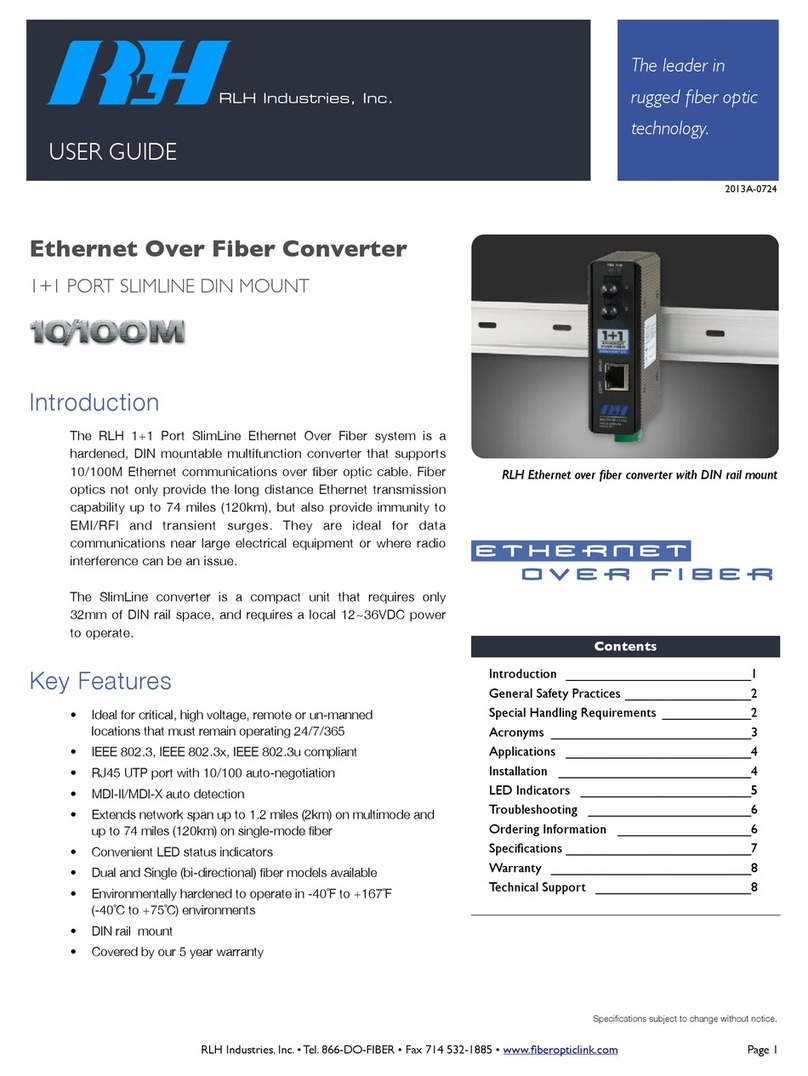
RLH Industries
RLH Industries 1+1 PORT SLIMLINE User manual
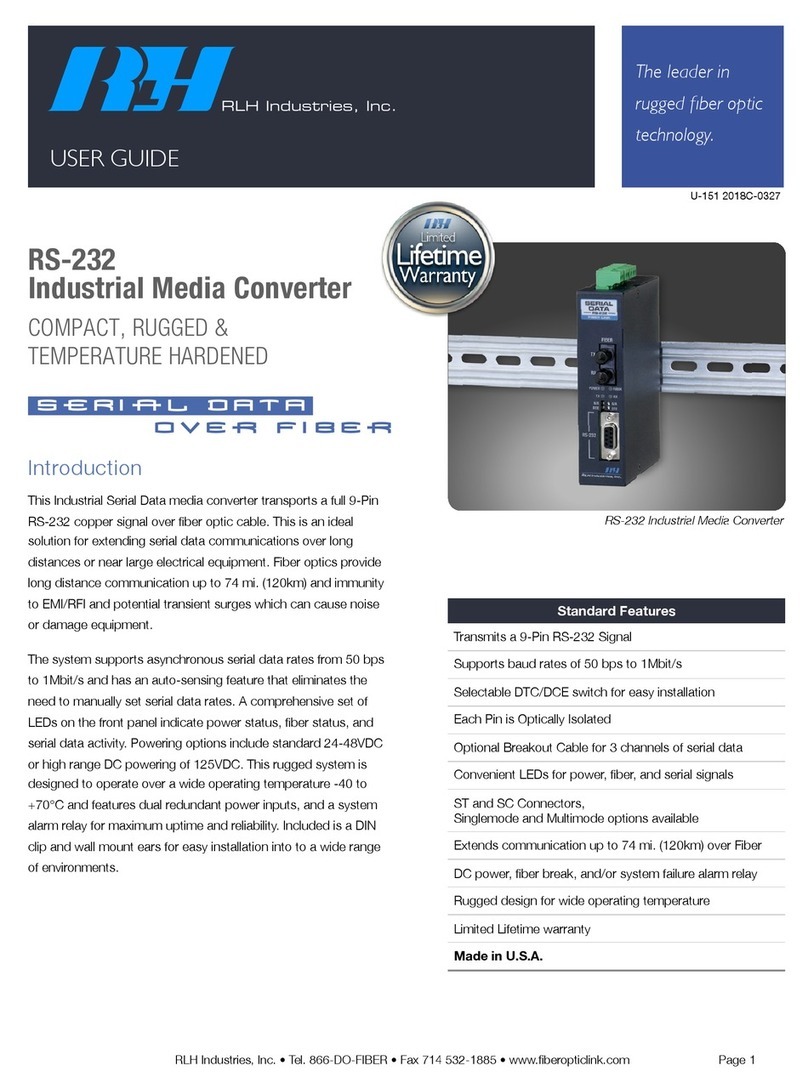
RLH Industries
RLH Industries SED-03-2 User manual
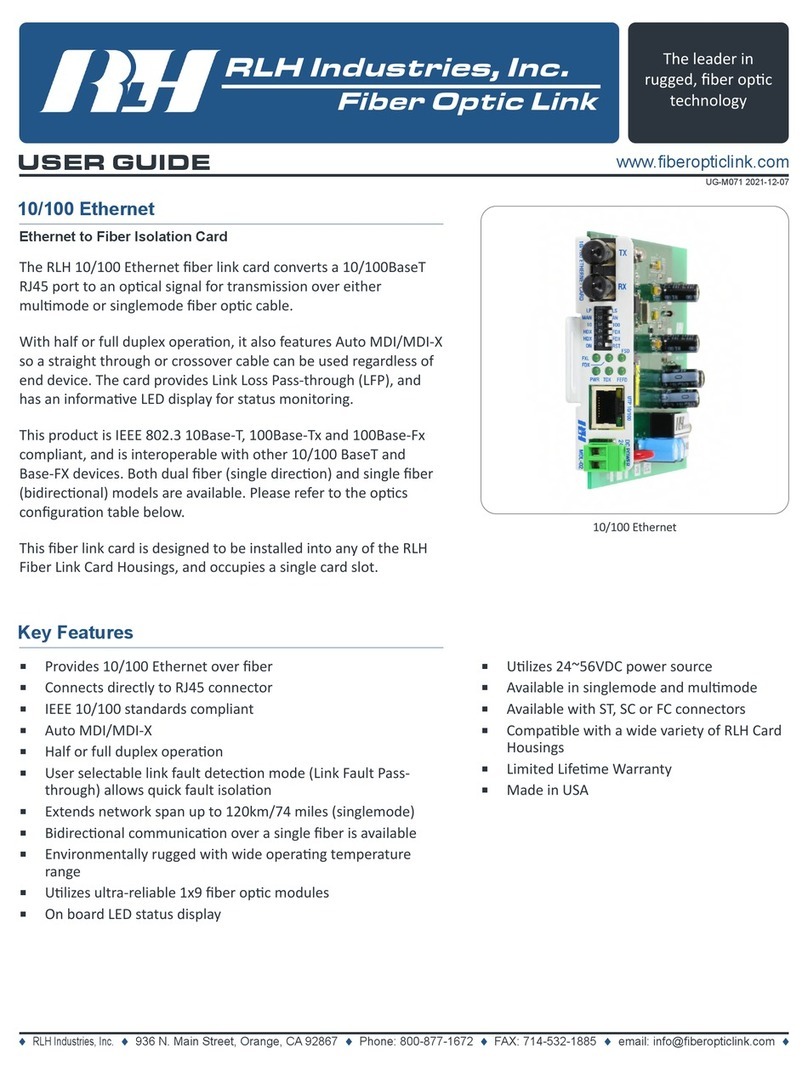
RLH Industries
RLH Industries RLH 10 User manual

RLH Industries
RLH Industries Fiber Optic Link User manual
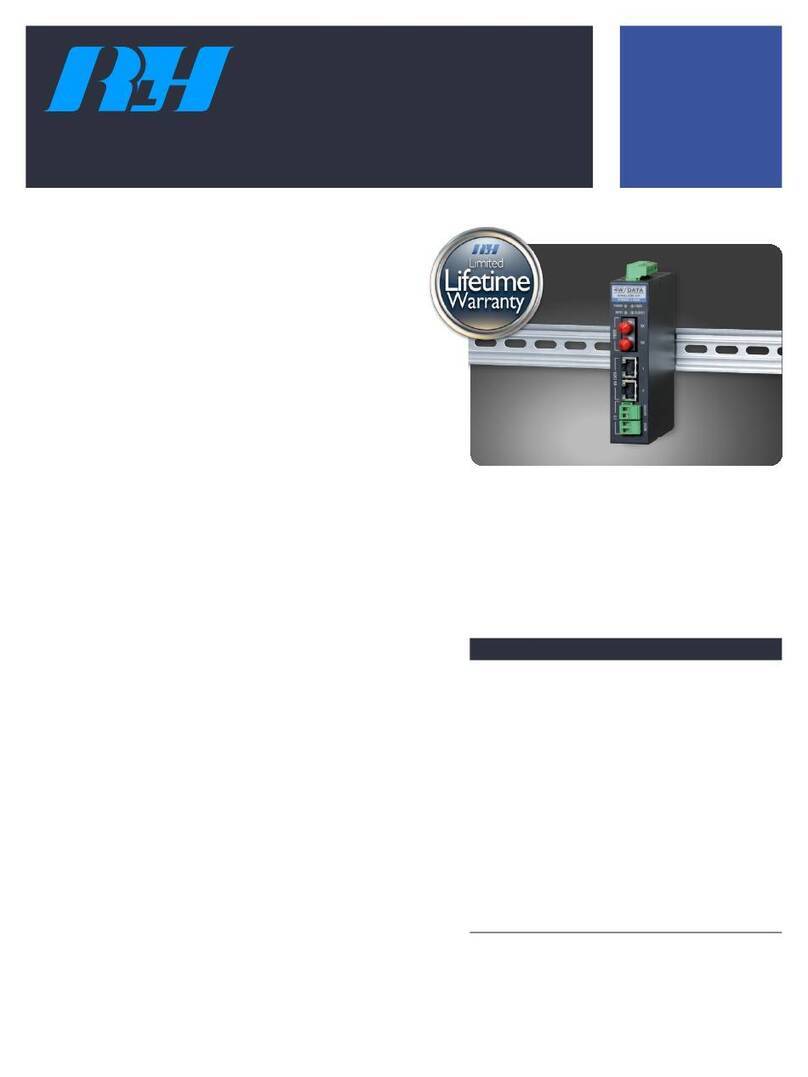
RLH Industries
RLH Industries 2 Channel 4 Wire Datawith E&M and I/O User manual
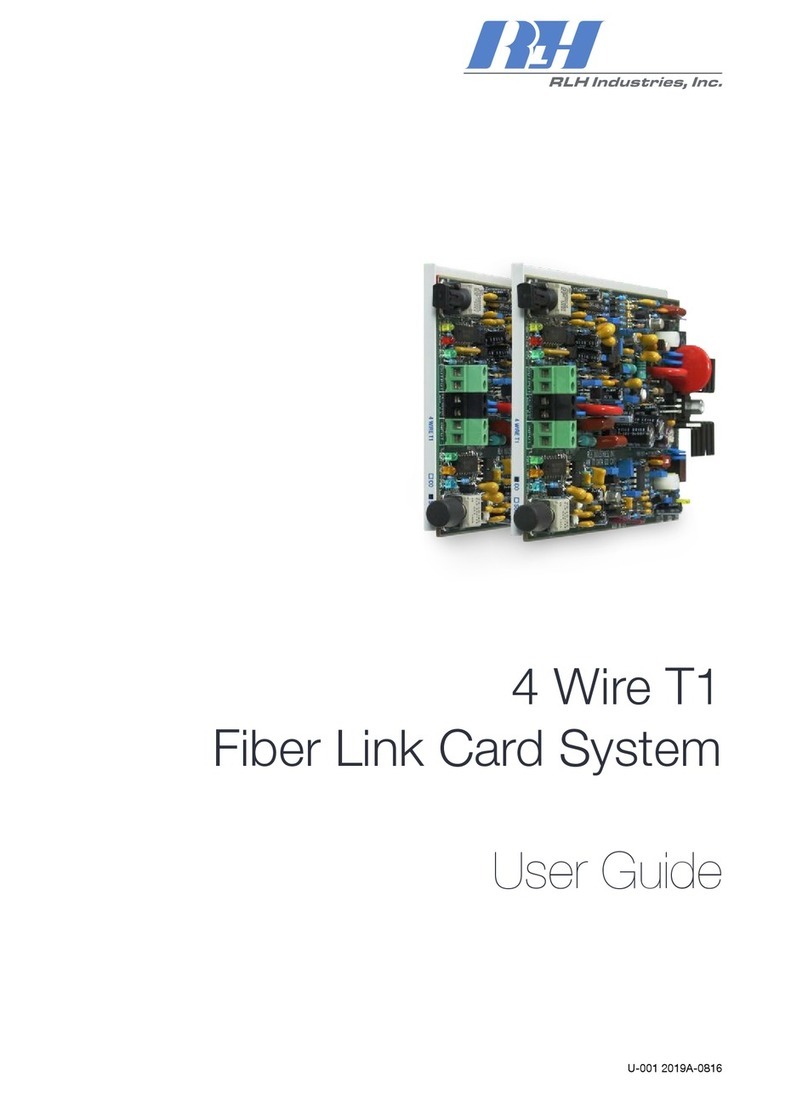
RLH Industries
RLH Industries 16 Channel T1 Over Ethernet Multiplexer... User manual
